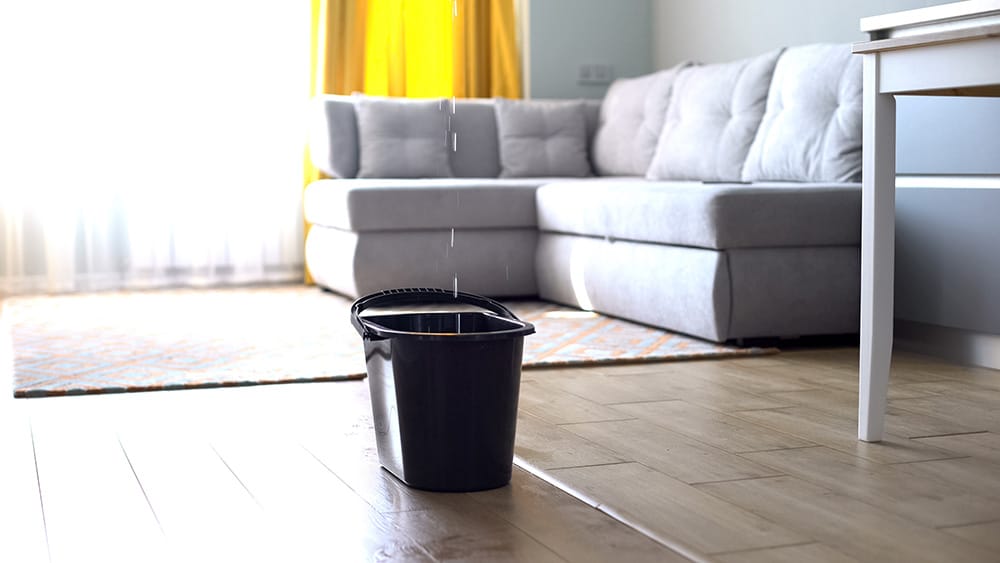Did you know that on any given day, water damage emergencies affect about 14,000 homes? And that not only can water damage come from forces outside of your home, like flooding or excessive rain, but it can also come from something as simple as a leaky faucet or an overflowing bathtub inside your home. No matter how your home acquires the water damage, it’s important that you treat it properly and handle it as quickly as possible to prevent any additional issues. This is where water mitigation comes into play. In this guide, we will walk you through how you can use water mitigation to help you keep your house and property free from water damage.
What Is Water Mitigation?
Water mitigation entails promptly evaluating, containing, and thwarting additional water damage following an initial incident. The primary objective is to minimize property loss resulting from a water leak or flood by halting the spread of water damage and preventing secondary issues. Typically, this involves extracting water, facilitating drying, sanitizing, and thorough cleaning. Water mitigation is the initial response following a water leak or the detection of water damage. While certain water mitigation tasks can be undertaken by homeowners, it’s advisable to enlist the expertise of professionals for a comprehensive water mitigation process.
The Water Mitigation Process
When you call a water mitigation team to your property, they will follow these basic steps to stop the spread of damage and to save as much of the property as possible.
Stop The Flow of Water
The initial phase of water mitigation involves halting the influx of water into your property. If water continues to seep into the space, the subsequent measures in the water mitigation process may prove less effective in mitigating damage. In cases of flood damage, it’s typically evident when the water flow has ceased. However, for leaks originating from a pipe or appliance, the primary task for the mitigation team is to confirm that the water supply has been shut off, and the root cause of the leak has been, or will be, addressed by a plumber. With the assurance that water is no longer entering the property, the water mitigation team can proceed with their comprehensive mitigation efforts.
Assess The Situation
Prior to initiating any measures, the water mitigation professionals must assess the situation at hand. The restoration industry employs two frameworks for evaluating water damage: Category and Class. Your team of experts will leverage both of these systems to ascertain the magnitude of the damage sustained by your property.
The Categories of Water Damage
The water damage category takes into account the origin of the water damage and the degree or extent of contamination. There are three categories of water damage:
Category 1: Water emanates from clean or sanitary sources such as a burst pipe (supply line only), a broken toilet tank, or an unused bathtub overflow.
Category 2: Water originates from a source containing considerable contamination from organic or inorganic matter and microorganisms. Overflow from your dishwasher or washing machine, or a broken aquarium, falls into this category. It is sometimes referred to as gray water.
Category 3: Water comes from a “grossly contaminated” source like sewage, flooding from any body of water, or surface water runoff. Category 3 water may contain pathogens, chemicals, and other harmful agents, and is sometimes referred to as “black water.”
The Classes of Water Damage
The water damage class provides information about the severity of water damage based on the volume of water present and the extent of absorption by the affected materials or building components. There are four classes of water damage:
Class 1: Water damage at the lowest level, where the affected materials constitute less than 5% of the combined surface area of the walls, floor, and ceiling in the space.
Class 2: A significant amount of water absorption has occurred, with wet, porous materials making up approximately 5%-40% of the combined surface area of the walls, floor, and ceiling in the impacted space.
Class 3: Class 3 losses involve the greatest amount of water absorption, where impacted materials constitute more than 40% of the combined surface area of the walls, floor, and ceiling in the affected space.
Class 4: Considered deep water damage, this class refers to the presence of “deeply held or bound water” in materials that do not easily absorb water, such as plaster, hardwood, or concrete. These are categorized as “low evaporation materials” and may require longer drying times and specialized drying methods.
After the water mitigation team assesses and determines the category and class of the damage, they can determine what the next best steps are and if the property will be safe for the residents to remain in.
Perform Water Extraction & Dry Out The Space
Considering the determined class and category of water damage, the water mitigation specialists will select appropriate tools to eliminate any remaining standing water in the affected area. After the extraction of all excess water from your property, their focus will shift towards complete drying of the space. Ensuring a proper and thorough drying process is essential to restore normal moisture levels and prevent the occurrence of mold growth or other potential secondary damages. The team may utilize various equipment such as pumps, vacuums, dehumidifiers, air scrubbers, and powerful fans in this phase of the water mitigation process.
Provide Temporary Solutions
As your property undergoes the drying process, the mitigation team might suggest temporary measures to prevent further water ingress while the space is drying and until comprehensive repairs are completed. These interim solutions could involve covering openings with tarps or securing broken windows with boards. Depending on the specific expertise and tasks covered by the mitigation team, it may be necessary to involve another contractor for additional assistance. In such instances, the mitigation team should be capable of providing recommendations and referring you to one of their reputable partner contractors.
Create A Restoration Plan Of Action
Your experienced mitigation team will collaborate with you to formulate an optimal plan for restoring your property to its pre-loss state. This comprehensive plan is typically discussed during the initial walkthrough and assessment of the water damage, ensuring mutual understanding of the necessary actions before commencing any work. The complete restoration plan should encompass:
An estimated timeline
An evaluation of salvageable/reparable items versus those requiring disposal/replacement
Key phases in the process, such as water extraction, drying, sanitization, etc.
Suggestions for additional repairs, if deemed necessary
Many individuals often question the distinction between water mitigation and water damage restoration. While these terms are frequently used interchangeably, there exists a crucial difference. Water mitigation involves immediate measures taken to minimize, or “mitigate,” the overall damage. These initial steps form part of the broader water damage restoration process, aiming to limit the overall impact of the loss and mitigate the risk of secondary damage, such as mold growth.
On the other hand, water damage restoration encompasses all the repairs conducted after mitigation, once the property is fully dried out. These restoration efforts focus on bringing your property back to its clean, safe, pre-loss condition. The specific steps involved in restoration depend on the nature of the loss but may include tasks such as sanitization, antimicrobial application, carpet cleaning or reinstallation, floor repairs, or drywall patching.
Find The Right Water Mitigation Company
When a leak occurs in your home, prompt action is crucial. That’s why you need a water mitigation team with skilled experts ready to respond. At 1-800 WATER DAMAGE of North Dallas, our top priority is safeguarding your property from water damage, and our water mitigation teams are prepared and swift. We’ll assist you in water removal, drying out your property, and restoring your home to its desired condition. Contact 1-800 WATER DAMAGE of North Dallas today, and let our water mitigation experts assist you and your property.



